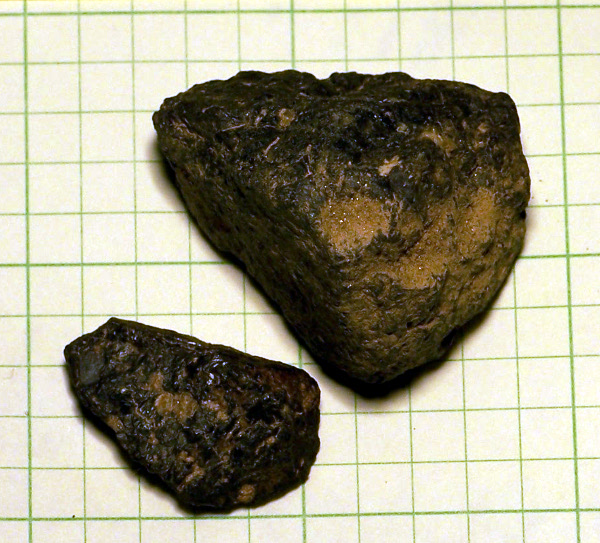| Tikalon Blog is now in archive mode.
An easily printed and saved version of this article, and a link
to a directory of all articles, can be found below: |
|
This article |
| Directory of all articles |
Edison's Iron Mine
September 20, 2010
Thomas Edison is well known as the inventor who developed practical versions of many items, such as the
electric light bulb, the
phonograph and
motion picture camera. He didn't invent the incandescent light bulb, as popular imagination would have it. He perfected an inexpensive, long-lived version of it using a
carbon filament derived from carbonized
bamboo. After inventing a practical light bulb, he went on to develop the electrical power generation and
distribution system to complement his invention. Unfortunately, his system used
direct current, and it was
overtaken by the
alternating current system invented by
Nikola Tesla and produced by
George Westinghouse. The advantage of alternating current is that
transformers can be used to step-up or step-down the voltage, allowing for very
high tension, but low
current, transmission lines to supply
standard voltage and high current at the point of use. Edison was awarded 1,093 US. patents in his lifetime, as compared to my paltry
twenty-eight.
One thing that few people know about Edison was his venture into
iron mining.[1] Edison became interested in metal mining when he was perfecting the light bulb, possibly because he was shocked by the high prices demanded for
platinum. In 1880, Edison patented a
magnetic process for separation of iron ore,[2] and not much later he chanced upon a
Long Island beach covered with black sand. As it turned out, the black sand was the iron ore,
magnetite (Fe
3O
4), and Edison saw an easy entry into the iron business. Unfortunately, the black sand was washed away by the time Edison tried to buy the beach, so he eventually looked for more conventional sources of magnetite ore.

Figure 1 from Edison's Magnetic Ore-Separator patent [Ref. 2].
Edison built himself a crude
magnetometer based on what was called a Tieberg instrument and surveyed much of northern
New Jersey, a well-known iron-bearing region, for a
Mother Lode of magnetite.[3] He found it in
Sussex County, New Jersey, near the small village of
Ogdensburg, where he built a mining town and an ore-separating mill in grand scale. The mined ore was pulverized, then dropped alongside hundreds of electromagnets, each a foot in diameter and six feet long, which separated the high-magnetite ore from the tailings. This high magnetite ore fraction was passed through three additional drop towers for further refining. Always the entrepreneur, Edison sold the tailings to local construction companies as a
concrete additive.
Everything looks nice on paper, but the reality was quite different. Rock dust was everywhere, destroying machinery. Vibrations from the ore crusher destroyed a building. In true Edisonian fashion, he solved such problems as they appeared, but nine men were killed during operation of the mill, and many others were injured. At one point, Edison himself was buried under sixteen tons of ore dust in a separating tower. One problem was that the sand like magnetite wasn't compatible with the type of
blast furnaces in use at the time. Said
Carnegie Steel's Henry Frick, "What doesn't blow away in the railroad cars, blows out the chimney as soon as the furnace is fired." To solve that problem, Edison perfected manufacture of iron-bearing
briquettes through use of an
aqueous binder.
Finally, with all the technical problems solved, new sources of high quality iron ore were discovered at the
Mesabi Range in the northern
Minnesota. The Mesabi iron could be cheaply
surface mined, and iron prices fell. Edison's iron operation couldn't compete, and it was closed in 1900. He personally lost about two million dollars of his own fortune, which is about fifty million dollars in today's money.
All this happened just a forty minute's automobile drive from my house. It was a nice summer's day on Wednesday, September 15, 2010, so I drove to this historic site. Aside from a monument erected in 1999, there's not much left. Here are some photos from my excursion.

Monument erected at the site of the Edison Iron Works (a.k.a., The Works of the New Jersey and Pennsylvania Concentrating Company), N 41o 03.820 W 074o 34.230 (41.0637, -74.5701).

Entrance to an iron mine.

Some pilings, possibly for holding a load-bearing truss.

The large bolts likely held in place some large piece of equipment.

Magnetite collected from a wash near the Edison site. There are five small divisions per inch. These rocks are strongly attracted to a magnet..
References:
- Michael Peterson, "Thomas Edison, Failure," Invention and Technology Magazine, vol. 6, no. 3 (Winter, 1991), six pages.
- THOMAS A. EDISON, "Magnetic Ore-Separator," US Patent No. 228,329 (January, 1880).
- My home in New Jersey is adjacent to a town called Succasunna, an Indian word for "Black Rock," alluding to the color of the magnetite ore contained in the surrounding hills. Incidentally, television and radio reception in my area is mostly blocked by these ferrous features.
Permanent Link to this article
Linked Keywords: Thomas Edison; electric light bulb; phonograph; motion picture camera; carbon; bamboo; electric power distribution; direct current; current wars; alternating current; Nikola Tesla; George Westinghouse; transformers; high tension; current; mains electricity; iron ore; platinum; magnetic; Long Island; magnetite; US Patent No. 228,329; magnetometer; New Jersey; Mother Lode; Sussex County, New Jersey; Ogdensburg; concrete; blast furnaces; Carnegie Steel; Henry Frick; aqueous binder; Mesabi Range; Minnesota; surface mining; truss; wash.